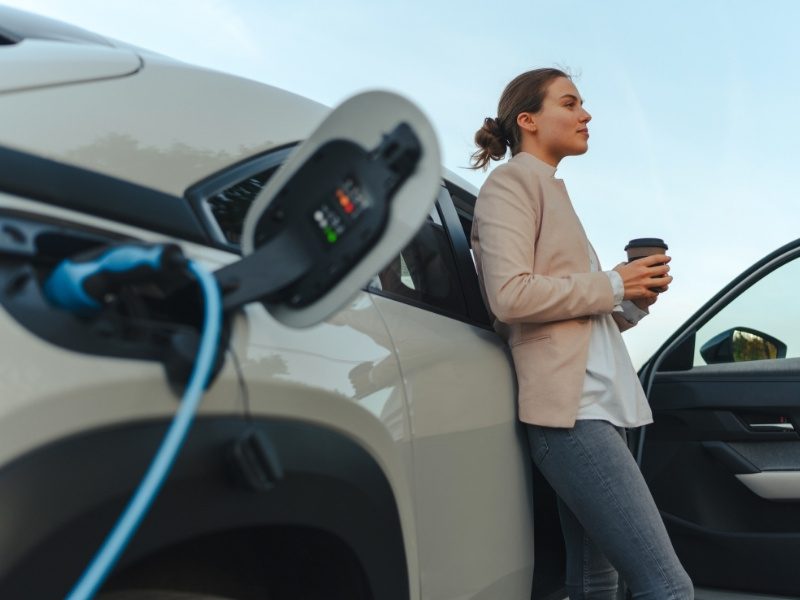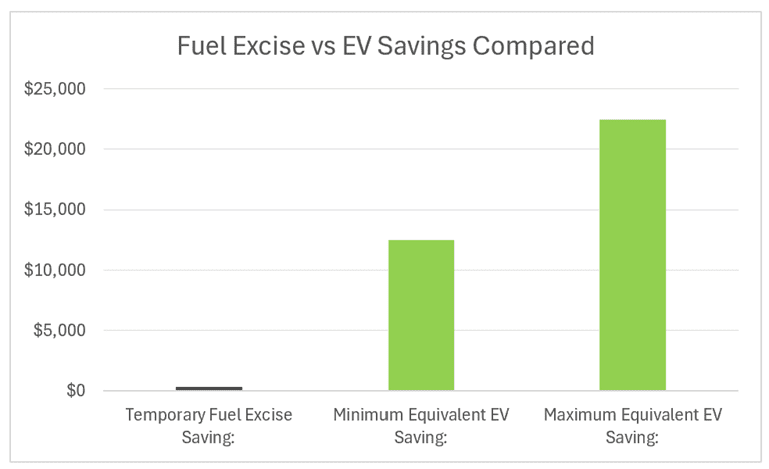As Australians head to the polls this Saturday to elect their federal government, the cost of driving has taken centre stage like never before.
Both sides of politics are rolling out policies to ease the cost burden of motoring, but one proposal stands out: the temporary halving of the fuel excise tax, commonly known as the 25-cent fuel discount. It sounds irresistible, but how does it stack up against the savings you could unlock by switching to an electric vehicle (EV)?
Spoiler alert: While the fuel discount saves you about $312, an EV could save you between $27,000 and $50,000—or more—over the life of your car. Let’s break it down and see why the choice is clearer than you may think.
The Fuel Discount vs EV Efficiency: A Stark Contrast
The 25-cent fuel excise cut sounds like a win, but let’s put it in perspective. At an average fuel price of $2 per litre, this discount trims your cost to $1.75 per litre. For the average Australian family that burns through 52 litres of fuel weekly, that’s a modest $312 in savings over the six months the discount is promised to last. But here’s the catch: it’s temporary. Once those six months are up, you’re back to paying full price at the pump.
Now, consider an electric vehicle. EVs are game changers because they’re far more efficient than traditional internal combustion engine (ICE) cars. While ICE vehicles convert only 20-30% of their fuel’s energy into motion, EVs achieve 60-70% efficiency—making them two to three times more efficient. This means every dollar you spend on “fuel” for an EV goes much further. Plus, EV owners have a range of charging options that can slash costs even more, from fast DC chargers to home grid charging, effectively free solar power, or complimentary charging at shopping centres, restaurants, hotels, and beyond.
Two EV Scenarios: Savings for Every Lifestyle
-
Group 1: The Worst-Case Scenario. Imagine you live in an apartment with no access to home charging, no solar power, and no free charging nearby. You rely entirely on fast DC chargers, which are the most expensive EV charging option. Even then, these chargers cost about half as much as refuelling an ICE car. With fuel at $2 per litre, this group effectively “pays” the equivalent of $1 per litre —a savings of $1 per litre compared to an ICE car. That’s four times the savings of the 25-cent fuel discount.
-
Group 2: The Typical EV Owner. Most EV owners fall into this group, blending home grid charging, free solar power, complimentary charging at businesses, and occasional fast charging on road trips. This mix can cut their “fuel” costs by up to 90%, equivalent to paying just 20 cents per litre. Compared to the $1.75 per litre after the fuel excise cut, this group saves a staggering $1.80 per litre. For the average Australian, that’s a massive reduction in driving costs.
The Numbers Don’t Lie: $312 vs. $27,000-$50,000
-
Group 1 (Worst-Case Scenario): Saving $1 per litre equivalent translates to roughly $2,700 per year, or $27,000 over 10 years.
-
Group 2 (Typical EV Owner): Saving $1.80 per litre equivalent means about $4,800 per year, totalling nearly $50,000 over 10 years.
Why EVs Are the Smarter Choice
Want the latest EV news delivered straight to your inbox? Subscribe to our free daily newsletter




